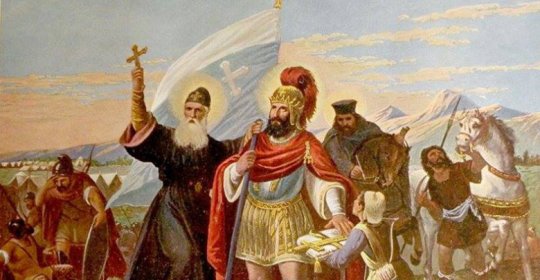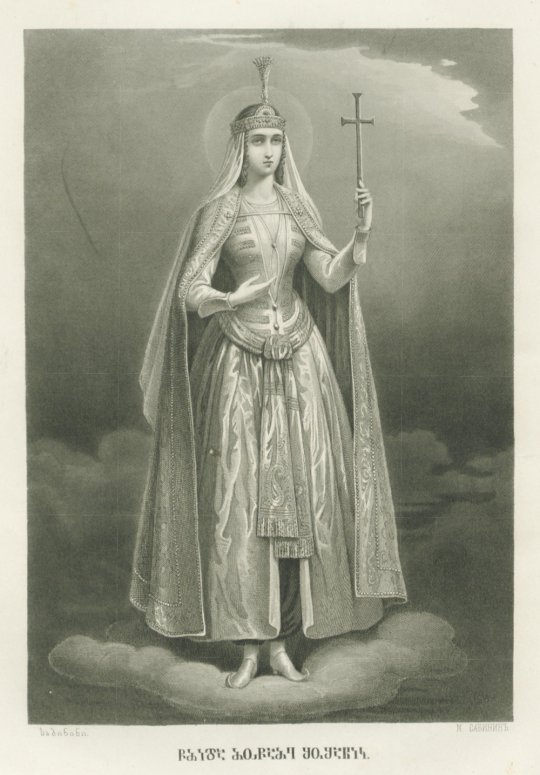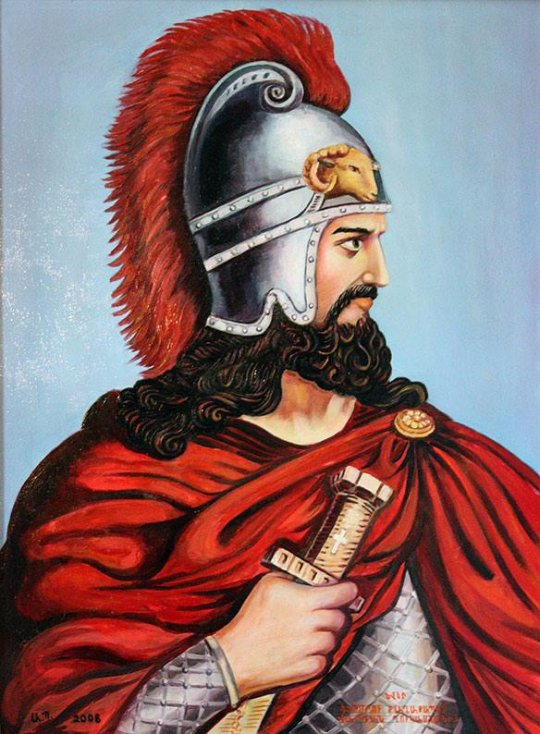

საზოგადოებრივი ვარდან მამიკონიანი და შუშანიკი ლაზები იყვნენ 2018, 9 აგვისტო, 6:32 
ვარდან მამიკონიანი გახლდათ მამა წმინდა შუშანიკისა, რომლის მარტვილობაც იაკობ ხუცესის (ცურტაველი) მიერ აღწერილი პირველი ქართული ჰაგიოგრაფიული ძეგლია. მამიკონიანებს სომხური ისტორიოგრაფია არ განიხილავს ადგილობრივ მთავრებად. ისინი მოსულებად მიიჩნევიან, კერძოდ "ჭანისტანიდან". ზოგიერთი მეცნიერის ვარაუდით, ჭანისტანი იგივე ჩინეთია, რაც, ცოტა არ იყოს, სასაცილოდ ჟღერს მაშინ, როდესაც იმ დროის სომხეთს პირდაპირ ესაზღვრებოდა ქართული ჭანეთი. ცნობილმა სომეხმა მეცნიერმა ნ. ადონცმა დაამტკიცა, რომ "ჭანთა" ქვეყანა არის მამიკონიანების საგვარეულო მხარის - ტაოს მეზობლად მდებარე ჭანეთი და არა შორეული ჩინეთი. მე-5 საუკუნის ასევე სომეხი ისტორიკოსის - ფაუსტოს ბიზანდუცის ცნობით, მამიკონიანებს რაღაც შინაური კონფლიქტის გამო დაუტოვებიათ მშობლიური ჭანეთი და ტაოს იმ ნაწილში გადასულან, რომელიც იმ დროს პოლიტიკურად სომხეთთან იყო დაკავშირებული. იგივე ისტორიკოსის გადმოცემით, მანუელ მამიკონიანი სომეხთა მეფე ვარაზდატს (374-377 წწ.) ასე მიმართავს: "ჩვენ არასოდეს ვყოფილვართ თქვენი მსახურნი, არამედ ვიყავით თქვენი თანასწორნი, თქვენზე უფრო განჩინებულნი, რადგან ჩვენი წინაპარნი იყვნენ მეფენი ჭანთა ქვეყანაში, მაგრამ ძმათა შორის მოხდა დიდი სისხლისღვრა. ჩვენ დავტოვეთ სამშობლო და მოვედით აქ". 
ჭანეთი ისტორიული მესხეთის ნაწილია და ახლა თანამედროვე თურქეთის ტერიტორიაზე მდებარეობს. იქიდან წასული მამიკონიანები ვრცელ ტერიტორიას ფლობდნენ ტაოსა და ტარონში. კავკასიის ერთ-ერთ ყველაზე ცნობილ ისტორიკოსს, კირილ თუმანოვს აქვს შრომები ამ თემაზე და ის ადასტურებს, რომ ვარდან მამიკონიანის ჩინელობა სასაცილოა და ის ჭანი, იგივე ლაზი გახლდათ - "მამიკონიანები და ლიპარიტები - არმენიკა" ვენეცია 1969 წ. გვერდი 125-137. ასევე მეორე ნაშრომი კირილ თუმანოვისა - "კავკასიის ქრისტიანობის ისტორიის კვლევა (ჯორჯთაუნის უნივერსიტეტის პრესა, 1963 წ.) გვ 209. 211-212, 238. თავად არისტოკრატიული გვარი - თუმანოვები (თუმანიშვილი) მოდის მამიკონიანებიდან. საკუთარი გვარის წარმომავლობა დიდ მეცნიერს ნამდვილად არ შეეშლებოდა. ამას გარდა ამ თემაზე კვლევები აქვს ამერიკელ-სომეხ მეცნიერს რობერტ ჰიუსენს (ხუსენიანი) 2001. სომხეთი: ისტორიული ატლასი. ჩიკაგოს უნივერსიტეტის პრესა. გვ. 95. სადაც თავად ჰიუსენიც ადასტურებს ვარდან მამიკონიანის ლაზობას. 
სომეხთა სამეფოს მხედართმთავრობა მამიკონიანებს მემკვიდრეობით ეკავათ მე-4 საუკუნიდან მოყოლებული. იაკობ ცურტაველიც გვამცნობს, რომ შუშანიკი იყო სომეხთა, და არა სომეხი სპასპეტის ქალიშვილი. შუშანიკი ცოლად გააყოლა ვარდანმა ქართველ, გუგარეთის ერისმთავარ არშუშას ძეს, ვარსქენს. სწორედ ეს არშუშა და ვარდან მამიკონიანი მიიწვია სპარსეთის მეფემ იეზდიგერ მეორემ, ქრისტიანობის უარყოფა და მაზდეანობის მიღება მოსთხოვა. ეს იყო როგორც პოლიტიკური აქტი იმისთვის, რომ ბოლომდე ეღიარებინათ სპარსეთის ჰეგემონია. მაშინ ორივემ უარყო ქრისტიანობა, მაგრამ ეს ფორმალური ნაბიჯი იყო თავის გადასარჩენად. როდესაც ვარდან მამიკონიანი დაბრუნდა სომხეთში, ის სათავეში ჩაუდგა ირანის წინააღმდეგ დიდ აჯანყებას, რომელსაც საერთო სახალხო ხასიათი ჰქონდა. ბრძოლები მიმდინარეობდა 450-451 წლებში. საბოლოო ბრძოლა გაიმართა 451 წლის 21 მაისს ავარაირის ველზე, სადაც აჯანყებული სომხები დამარცხდნენ, ხოლო ვარდან მამიკონიანი მოკლეს. ავტორი: თორნიკე ფხალაძე 2715 5-ს მოსწონს 1-ს არა |
Mamikonian or Mamikonean was an aristocratic dynasty which dominated Armenian politics between the 4th and 8th century. They were the most notable noble house in Early Christian Armenia after the ruling Arsacid dynasty and held the hereditary positions of sparapet (supreme commander of the army) and dayeak (royal tutor), allowing them to play the role of kingmaker for the later Armenian kings. They ruled over extensive territories, including the Armenian regions of Tayk, Taron, Sasun, and Bagrevand, among others. The Mamikonians had a reputation as supporters of the Roman (later Byzantine) Empire in Armenia against Sasanian Iran, although they also served as viceroys under Persian rule. Their influence over Armenian affairs began to decline at the end of the 6th century and suffered a final, decisive blow after a failed rebellion against Arab rule over Armenia in 774/75 (Garsoian 2005; Garsoian 1991, pp. 1278–1279).
The famous Armenian historian, specialist of Byzantine and Armenian studies, and philologist Nicholas Adontz, proved that the country of the "Chans" (Tzans) is Chaneti (Tzaneti), the ancestral land of the Mamikonians, and definetely not China or any other place. He wrote, that this legend to be "a confusion, prompted by the love of exotic origins, between the ethnicon čen and that of the Georgian Čan-ians (Tzanni) or Lazi... who were settled in the neighbourhood of Tayk", Georgian Tao / Tao-Klarjeti region. He derives the dynasty's name from Georgian mama, meaning father, combined with the Armenian diminutive suffix -ik (Toumanoff 1963, p. 211, n. 23.).
Chaneti is a part of historical Colchis and is now located on the territory of modern Turkey, region called Lazistan / Lazeti / Lazica / Lazona / Tzaneti. Chanians or Chans is a name of Laz or Laz highlanders. The Mamikonians who, went from there, owned a large area in Tao (Historically Georgian Tao-Klarjeti region) and Taron (where also Meskhi / Mushki - Georgian sub-ethnic group lived from the ancient times).
One of the most famous historians of the Caucasus, Kirill Tumanov, has works on this subject and he proves that Mamikonian were not Chinese and that it is ridiculous. He acknowledges, that Chan (Tzan) was the same Laz ("Mamikonians and Liparites - Armenia" Venice 1969. Pages 125-137).
Cyril Toumanoff, who describes the Mamikonians as the "immemorial dynasts of Taykʻ." (Toumanoff 1963, p. 209.).
The aristocratic surname itself - Tumanovs (Tumanishvili) comes from the Mamikonians. He knew the origin of his own surname better, then anyone.
see the work of Kirill Tumanov - "Study of the History of Caucasian Christianity (Georgetown University Press, 1963) pp. 209. 211-212, 238.
In addition, American-Armenian scholar Robert Hussein (Husseinian) has conducted research on this topic in 2001. Armenia: Historical Atlas. University of Chicago Press. P. 95. where Hussen himself confirms that Mamikonian family is originally Laz. Mamikonian's Cadet branches are Liparitids and Tumanishvili - Georgian noble families.
მან ფარნაოზის ანი და ბანი,
რატომ აშინებს ზოგ ფსევდო ქართველს,
რომ შუშანიკი აღმოჩნდა ჭანი?!
შენ არ გაბედო ამის დაწერა, -
ბრიყვი გენიოსს აშინებს დანით.
ჩინელი იყოს, გინდა სომეხიც,
მაგრამ არ უნდა იყოს ის ჭანი.
ასეთ იდიოტს ჭანეთზე უფრო,
რომ შეაყვარა ჰაიასტანი?!
რატომ ვუმალავთ ხალხს - შუშანიკის
მამა - პაპა რომ აღმოჩნდა ჭანი?!
ქართულ გონებას გაჩენის დღიდან
ღვთის და მაცილის ბეჭედი აზის,
საქართველოში ორმაც არ იცის
ბაგრატიონი რომ არის ლაზი.
ამ დინასტიის შემქმნელის ჯიღა
ეკუთვნის კოლხეთს, ტაოს და ფაზისს,
თაყაიშვილის წიგნშიც წერია
ბაგრატიონი რომ არის ლაზი.
ისტორიასაც გაჩენის დღიდან
ვატყობ მაცილის ბეჭედი აზის.
ამიტომ ერმა დღესაც არ იცის
ბაგრატიონი რომ არის ლაზი.
ლექსის ავტორი: ლადო ალფენიძე
Vardan Mamikoniani became the father of St. Shushanik, whose life is described in the first Georgian hagiographic monument described by Jacob Khutses (Tsurtaveli). The Mamikonians are not considered by Armenian historiography as a local rulers. They are considered to have come, in particular from "Chanistan". Some scholars suggest that Chanistan is the same as China, which, to say the least, sounds ridiculous when Georgian Chaneti or Chania was directly bordered by Armenia at that time. The famous Armenian scientist N. Adonts proved that the country of the "Chans" is Chaneti, the ancestral land of the Mamikonians, and definetely not China.
According to the 5th century Armenian historian Faustus Byzantus, the Mamikonians left their native Chaneti due to some internal conflict and moved to the part of the Tao, that was politically connected with Armenia at that time. According to the same historian, Manuel Mamikonian addresses the Armenian king Varazdat (374-377) as follows: "We left our homeland and came here."
Chaneti is a part of historical Colchis and is now located on the territory of modern Turkey, region called Lazistan or Lazeti. Chanians or Chans is a name of Laz highlanders. The Mamikonians who went from there, owned a large area in Tao and Taron. One of the most famous historians of the Caucasus, Kirill Tumanov, has works on this subject and he proves that Vardan Mamikonians were not Chinese and that it is ridiculous and that Chan was the same Laz - "Mamikonians and Liparites - Armenia" Venice 1969. Pages 125-137.
Also the second work of Kirill Tumanov - "Study of the History of Caucasian Christianity (Georgetown University Press, 1963) pp. 209. 211-212, 238.
The military rule of the Armenian Kingdom has been inherited by the Mamikonians since the 4th century. Jacob Tsurtaveli also informs us that Shushanik was the daughter of a Prince "of Armenians", and not an "Armenian" Spaspet. Shushanik was married to Vardan, the son of Arshusha, a Georgian prince of Gugareti (Gugars were one of the Georgian peoples living in the territory of Northern Armenia and Southern Georgian, in the Lore province).
It was Arshusha and Vardan Mamikonian who were invited by King Yazdiger II of Persia to renounce Christianity and accept Mazdeanism. It was like a political act to fully recognize Persian hegemony. Both then rejected Christianity, but it was a formal move to save themselves. When Vardan Mamikonian returned to Armenia, he spearheaded a major uprising against Iran that had a common popular character. The battles took place in 450-451. The final battle took place on May 21, 451 in the Avarair Valley, where the Armenian rebels were defeated.
Shushaniki iyo somexi qali!
Metsac getyvit, pirveli qristiani mepe miriani iyo sparsi,anu iraneli!gadashalet cigni da gadaamocmet,yvelaper sisuleles pirdapir nu ijerebt!
ძალზე საინტერესო სტატიაა, თან ისტორია და ფიზიკა ჩემი უსაყვარლესი საგნები იყო და ისტორიული სინამდვილის ასახვა, რეალურად როცა ხდება ძალიან მომწონს.
რესპექტი